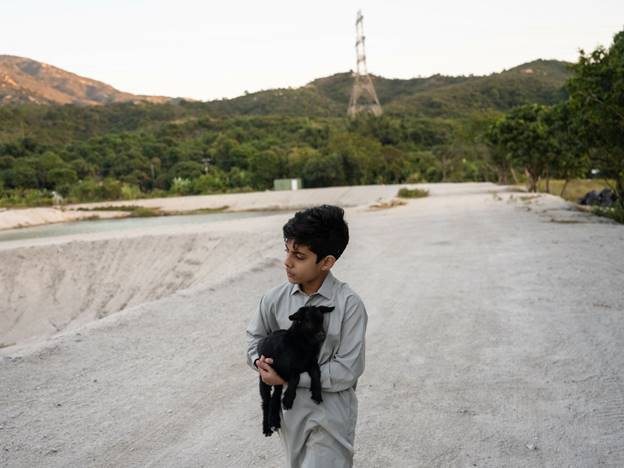
From hiring an Urdu-speaking dialogue coach to portraying the struggles faced by Pakistani migrants, director Lau Kok Rui made sure his film is authentic in its portrayal
Why Hong Kong Film The Sunny Side of the Street Is an Honest Representation of Pakistani Diaspora
By Fizza Qureshi
When I first arrived in Hong Kong as an international student, I was pleasantly surprised by signs of home dotted across the city. There were Pakistani grocery stores in every other neighborhood; echoes of Urdu, Punjabi and Sindhi in various public spaces, and restaurants specializing in different South Asian cuisines that didn’t let me miss Karachi’s food scene.
Currently, Hong Kong is home to a large South Asian community that has had ties to the city since pre-colonial times. This demographic is true for other East Asian cities as well. But, generally speaking, these communities remain outside mainstream imaginations of what the South Asian ‘diaspora’ looks like.
These imaginings are often informed by big American productions such as Ms Marvel and Never Have I Ever. As a result, we often encounter representations of South Asian diaspora based in the West, but we rarely see the lives and experiences of those settled across East Asia.
Despite the prolific success of East Asian entertainment industries, production houses are seldom interested in telling non-East Asian stories. This blind spot exists in Hong Kong’s entertainment industry as well, which for decades was the third largest motion picture industry in the world.
The Sunny Side of the Street tries to shift this dynamic. By following the story of a Pakistani refugee family, it weaves a thoughtful narrative around race, citizenship and immigration regimes. Historically, Hong Kong has drawn migrants from all over the world. From becoming a port for the British empire, to a booming finance hub — the city has been at the center of opportunities for all kinds of workers.
At the same time, the city remains extremely stratified, scoring high on global inequality indices . Lau Kok Rui’s The Sunny Side of the Street shows us that these inequalities seep into migrant and refugee communities as well; that the experience of a South Asian refugee is different from a migrant or a refugee from Mainland China. Given enough time, the latter can assimilate with far more ease and truly claim the city as their own, unlike their non-Chinese counterparts.
Watching the film reminded me of what a Nepalese friend who grew up here once told me — in Hong Kong, if you’re white you’re an ‘expat’ and if you’re brown or Filipino, you’re a ‘migrant’ or an ‘ethnic minority’.
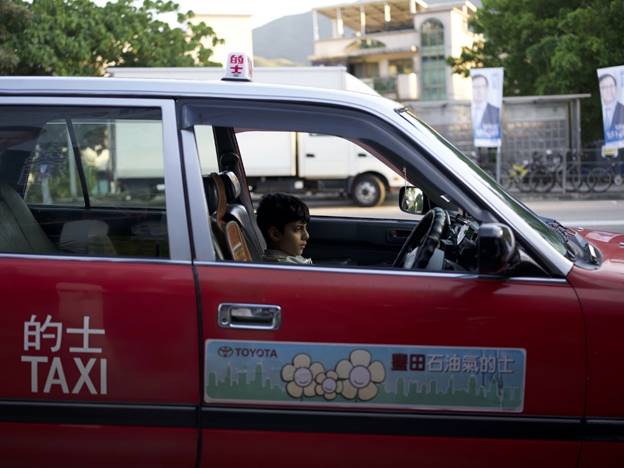
In the film, the protagonist — a local taxi driver played by Anthony Wong — repeatedly mobilizes his privilege as a Chinese-migrant-turned-Hong Kong-resident against a ‘Paki’ refugee. His HKID is his weapon and he wields it to lay bare the systemic violence refugees are subjected to because of their precarious citizenship arrangements.
However, ultimately, it is the parallels between these two experiences — that of a Chinese migrant and a Pakistani refugee arriving in Hong Kong in search of a better life — that create the conditions for solidarity.
Alongside him, Sahal Zaman — who plays Hassan — is a Pakistani refugee child falling through the cracks produced by violent immigration regimes. After his father is killed in a hit and run incident by the local taxi driver, he runs away from home and ends up being recruited by a South Asian man running a petty robbery ring. As we follow Zaman playfully breaking into cars, and sipping Fanta with his young friends, the film underscores that in the absence of social security nets, refugee children are vulnerable to being roped into cycles of criminality.
The portrayal remains focused on structural conditions without assigning a moral valence to their actions. In fact, the child actor is a treat to watch, because his innocence and child-like quirks are maintained throughout the film.
But this isn’t the best part — surprisingly, the film has Urdu dialogue and the characters speak vernacular, everyday Urdu. Now, this may sound basic (they’re Pakistani refugees, of course they’re going to speak in their own language!) but given Hong Kong’s ethnically homogenous context where Cantonese is widely spoken, and a film industry that predominantly produces Cantonese films, showing a film with considerable Urdu dialogue to an audience that does not understand the language is a feat on its own.
What’s more is that The Sunny Side of The Street avoids the biggest trappings that Bollywood falls into when it sets out to represent Pakistani and/or Muslim characters on-screen. The figure of the Pakistani Muslim in popular Bollywood media is dressed in crisp white shalwar kameez, donning a white prayer cap with eyes lined with kohl.
This caricature-ish figure greets people with an “ adaab” and speaks Urdu that sounds closer to Ghalib’s poetry than to the everyday vernacular spoken by most Pakistanis. An example of such a figure can be found in the trailer of Mission Majnu, a Bollywood action movie starring Siddharth Malhotra that is riddled with stereotypes about Pakistanis and Muslims.
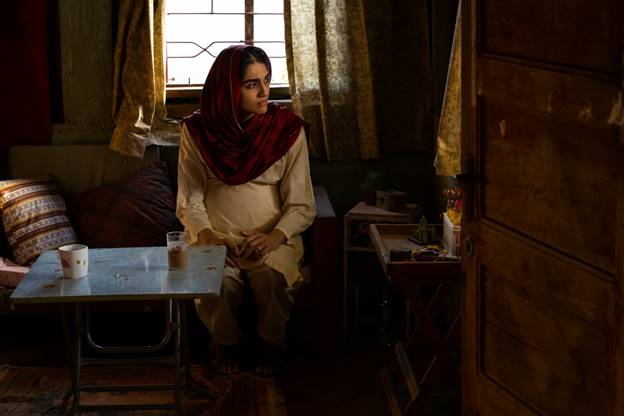
In contrast, the characters in The Sunny Side of The Street sound like everyday Pakistanis — they greet each other with Assalamolaikum, use Urdu curse words, and sound natural as they code-switch between Chinese and Urdu. Some dress in shalwar kameez, while others dress in regular pants and t-shirts.
Kiranjeet Gill, who plays Hasan’s mother, says that as far as representation goes, this film is an exception within Hong Kong’s entertainment industry. The Malaysian director, Lau Kok Rui, hired a Pakistani Muslim ‘dialogue coach’ who helped polish the script. Gill added that the director was also open to feedback from South Asian crew members and wanted to represent characters as thoughtfully as possible. At first, she was told to wear the hijab during her scenes, but when she told the director that Pakistani women typically cover their heads with a loosely wrapped dupatta, her suggestion was immediately taken into account.
The director described to Images an elaborate set of difficulties trying to cast Pakistani actors. Owing to what he characterizes as the lack of a network of Pakistani talent within Hong Kong’s industry, Lau had to spend six months alone on the casting process. After a few arrangements that fell through, he decided to ultimately hire both Indian and Pakistani actors.
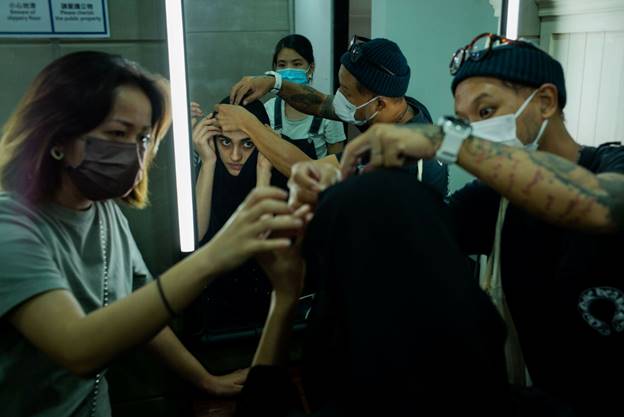
Influenced by his own experience of being a Chinese immigrant in Malaysia, his attention to detail goes deeper than a desire for authentic representation; it comes from viewing the immigrant experience as an unmoored journey that moves through different places and experiences in pursuit of a destination. But rather than being a physical place, that destination is a better quality of life.
“I didn’t want to tell a story that said, ‘they are here,’ I’m trying to say from an immigrant’s perspective that Hong Kong is just a steppingstone, the real goal is a better life.” In doing so, Lau displaces the importance assigned to host countries, and centers his film on the immigrant experience itself.
The director’s vision translates on screen most evidently in the way Pakistani characters are afforded complexity. It does not attempt to create perfect victims by reducing them to passive, one-dimensional characters nor does it stereotype them as immoral, less-intelligent or backward. In some ways, Sunny Side departs from the ‘model-minority’ portrayal of Pakistani immigrants, such as Abdul Ali from the popular Korean show Squid Game .
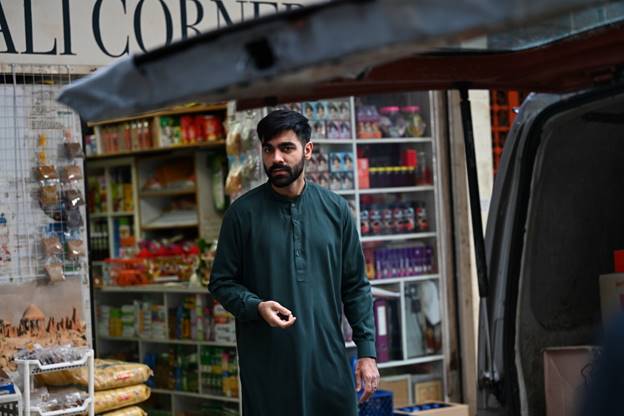
For example, Hassan’s father — who is played by Inderjeet Singh — is a lawyer who had to flee Pakistan with his family due to professional differences. He is principled, upright and knows about the laws that impact his current situation. At the same time, he is also mercurial and imperfect. He is broken down by his circumstances, but also stands against a system that threatens to take everything away from him — often to his own disadvantage. This is the best thing a film of this genre can do: afford marginalized characters agency, complexity and nuance.
The only place I would have liked to see more depth is in Gill’s character. On one hand, Hassan’s mother evokes a much needed balanced and emotional response because of how helpless and desperate she is in the face of immigration regimes. But on the other, it is almost as if she passively resigns herself to her circumstances in front of her husband, then the state, and then her son. She ultimately cedes control to a Chinese taxi driver, as she sacrifices herself and her future.
In many ways, South Asian women are culturally expected (and constructed) to constantly self-sacrifice and passively accept what is handed to them. But within these constraints, there are overwhelming examples of them resisting, pushing back and taking control of their lives.
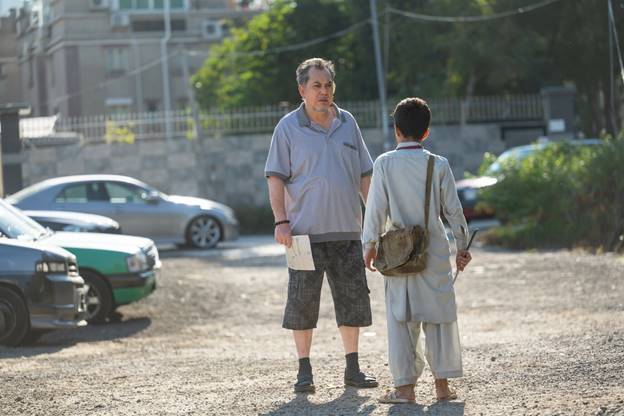
At the same time, the aforementioned local taxi driver is also not portrayed as the ‘savior’. He is as imperfect as his South Asian counterparts, if not more. After he ends up causing incredible harm to the refugee family, the story redeems him without necessarily glorifying him as a hero. In this way, Sunny Side leaves viewers with a sense of discomfort and tension, which is far more authentic than a binary narrative between a ‘savior’ and the ‘oppressed other.’
In many ways, it forces the audience to reckon with the realities of a fast-paced and glamorous city that is full of promise, hope and potential. And in doing so, it exposes a facet of Hong Kong’s underbelly, letting the audience sit with the fact that not all stories have a happy ending.
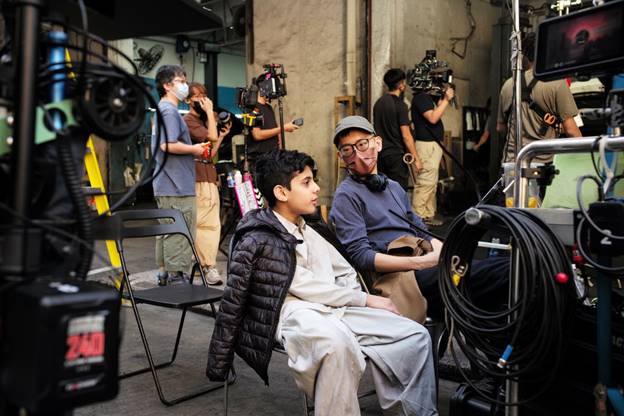
With several nominations and wins across different award platforms, The Sunny Side of The Street is a thoughtful film by Malaysian-born writer and director Lau, supported by a diverse crew. In 2023, Michelle Yeoh was celebrated in Hong Kong as the first female actor of East Asian origin to win at the Golden Globes. A few months later, she presented ‘Pakistani-Hong Konger’ Sahal Zaman Best New Performer at the Hong Kong Film Awards.
In what seemed like a passing down of a mantel, one hopes that Zaman’s win can do for the South Asian community in Hong Kong’s movie scene what many people hope Yeoh’s win will achieve in Hollywood. – Images.
All photos provided by director Lau Kok Rui

